- Home
- Deborah Harkness
The World of All Souls Page 20
The World of All Souls Read online
Page 20
Raleigh was eventually executed in 1618, and Bess worked tirelessly to vindicate his name after his death, finally achieving its restoration in the Bill of Restitution and allowing her one surviving son to inherit.
Witnesses recorded that following the execution, Lady Raleigh left with Raleigh’s head in a red bag.
See also: Walter Raleigh
ELIZABETH TUDOR, QUEEN OF ENGLAND
Other names: Good Queen Bess, the Virgin Queen, Gloriana
Origin of name: Elizabeth is of Greek and Hebrew origin, meaning either “God is abundance” or “my God is an oath.”
Date of birth: September 7, 1533 (around 3:00 p.m.)
Astrological sign: Virgo
Physical description: It is difficult to know what a queen looked like in the sixteenth century, even one who is well represented in portraits. Few artists want to paint an unflattering picture, especially of a queen. We can be fairly sure that her hair was originally golden red like her father’s, her eyes brown, her nose ridged or hooked in the middle, and her lips rather thin. According to the Venetian ambassador Giovanni Michiel in 1557, “Her face is comely rather than handsome, but she is tall and well-formed, with good skin, though swarthy; she has fine eyes.”
A member of: The Tudor dynasty
Family and romantic relationships: Daughter of Henry VIII and Anne Boleyn, half sister to Mary Tudor and Edward Tudor
Personal history: Elizabeth I was the daughter of Henry VIII and his second wife, Anne Boleyn. Henry had defied the Church of Rome to put away his first wife, Catherine, and marry Anne so that he could have a male heir—but to his great disappointment, Elizabeth was a girl. Two and a half years and one or two miscarriages later, Anne Boleyn was executed for high treason, making way yet again for a wife who could produce a son. Anne’s marriage to Henry was annulled, and Elizabeth was declared illegitimate and deprived of her place in the royal succession. The impatient Henry married Jane Seymour eleven days after Anne’s execution, and in less than a year and a half Jane produced the much-desired male heir, Edward.
Edward was not the answer to Henry’s fears about the succession, however. The boy was only nine when Henry died in 1547, and he himself died six years later. Edward had officially established the Church of England as a Protestant body, but his successor, Mary I, was a staunch Catholic who immediately began persecuting Protestants for heresy. After Mary died in 1558, the people welcomed Elizabeth with open arms. Though she was a Protestant, Elizabeth understood the political advantages of religious tolerance, famously declaring that she had no desire to “make windows into men’s souls.”
Elizabeth had been reared by various governesses and tutors and was one of the best-educated women of her generation, with knowledge of French, Flemish, Italian, Spanish, Latin, and Greek. No one expected her to remain unmarried as queen, however—this was unheard of, and previous decades had demonstrated the need to establish a clear line of succession. Her ministers were determined to have her make an advantageous alliance with a foreign prince, but Elizabeth successfully evaded marriage for the rest of her long life. How did she do it? Elizabeth Tudor inherited her father’s ego and her mother’s shrewdness and always stayed a step ahead of those who would manage her. She also showed a remarkable talent for avoiding disaster in all its forms—unwise political entanglements, romantic indiscretions, religious controversies, and revolts. One of the reasons for Elizabeth’s survival was her skill at guarding her secrets. Like Matthew Roydon, Elizabeth never gave anything away unless she was forced to or felt that it was in her best interest to do so.
Like most people, Elizabeth Tudor was neither saint nor devil. She was vain, imperious, loyal, learned, quick to anger, and capable of acts of great kindness. Most of all she was a graduate of the school of hard knocks. She once famously said, “If I were turned out of my realm in my petticoat, I would prosper anywhere in Christendom.”
Queen Elizabeth I passed away at Richmond Palace on March 24, 1603. There is a legend that earlier in her life John Dee foretold she would die in her sleep in a palace by the water. When the queen became ill while traveling in the spring of 1603, she tried to avoid her riverside palaces but was forced to stop at Richmond. There she refused to lie down, walking for days and days without speaking. Eventually she collapsed onto cushions arranged on the floor.
At the beginning of her long reign, no one expected Elizabeth Tudor to last more than a handful of years on the throne. By the end of it, few could remember a time when this remarkable woman was not queen. And never again could anyone say that a woman could not rule a country by herself.
My favorite movie set in Elizabethan England is Shakespeare in Love. I never tire of it. My favorite treatment of Elizabeth I’s long life is the BBC/PBS series The Virgin Queen (2005) with Anne-Marie Duff as Elizabeth. It is gloriously accurate, visually stunning, and very moving.
U
ANNIE UNDERCROFT
Origin of name: Annie was named after the undercroft (underground vault or chamber) in which she was found at birth next to her dead mother.
Date of birth: Early July 1576
Astrological sign: Cancer
Physical description: Fair and thin, with pale blue eyes and silver-blond hair
Family and romantic relationships: The witch Susanna Norman’s niece, a member of Father Hubbard’s family, and briefly Diana’s ward
Personal history: In 1590 Annie was a fourteen-year-old witch with a bit of skill and very little power. Diana took her on as a servant after she was sent by Father Hubbard. She worked briefly for William Shakespeare but sadly died of plague in 1593.
V
NICHOLAS VALLIN
Date of birth: c. 1535
Family and romantic relationships: Son of the Flemish clockmaker John Vallin
Personal history: Nicholas Vallin was a French Protestant craftsman who fled to England for religious reasons in the sixteenth century. He took up residence in the parish of St. Ann’s Blackfriars and was a member of the Dutch Church in Austin Friars. He and his father both died in the London plague of 1603. Today he is known mainly for his exquisite clocks. Vallin’s carillon clock, made in 1598, is one of the earliest musical clocks in existence. When you listen to it, remember that you are hearing sounds that people were listening to more than four hundred years ago.
(Listen to it here: www.youtube.com/watch?v=Ao2DXVK7mH8.)
Diana commissioned Vallin to make an elaborate mousetrap and Thomas Harriot’s telescope. The trap was an extravagance that Matthew still teases Diana about, but the telescope is priceless, because it represents incontrovertible proof that Harriot invented the telescope eighteen years before Galileo.
See also: DECORATIVE ARTS: A Silver-Gilt Mousetrap, Telescope
W
TIMOTHY WESTON
Full name: Timothy J. Weston
Origin of name: The name Timothy is of Greek origin, meaning “honored by God.”
Date of birth: February 6, 1979
Astrological sign: Aquarius
Physical description: Timothy’s eyes are mismatched, one blue and one green. He also wore mismatched cowboy boots when Diana met him, one red and one black.
A member of: Church of the Militant Elvis Party
Family and romantic relationships: Son of the eponymous lead drummer of the band Derek and the Derangers and descendant of poet Elizabeth Jane Weston
Personal history: Timothy Weston is a latte-drinking, dachshund-loving daemon with a quirky fashion sense. He was one of the crowd of creatures who gathered in the Bodleian after Diana called up Ashmole 782 for the first time. Fond of walking around with unplugged headphones hanging from his ears, Timothy is more hapless and harmless than threatening. But in typical daemonic fashion, he demonstrated breathtaking prescience when he saluted Diana Bishop at the Bodleian with the offhand pronouncement “You’re the one.” It took Diana a g
reat deal more study and a trip to sixteenth-century England before she fully understood his meaning.
When he’s not taking apart microfilm readers at the Bodleian, Timothy Weston lives at the Manor House in the small English village of Chipping Weston, where he shares his untidy home with a half dozen small and noisy dachshunds, including the speedy but incontinent Puddles. He inherited the house from his grandmother and is in the process of restoring it. Timothy is a sentimental soul who also purchased one of the missing pages of Ashmole 782, the one with the Tree of Life on it. Aided by his daemonic sixth sense, Timothy recognized that the page contained the remains of one of his grandfathers. He entrusted the page to Diana Bishop for safekeeping, thereby supplying the third and last missing page of the Book of Life.
AGATHA WILSON
Origin of name: Agatha is of Greek origin, meaning “good.”
Date of birth: April 8, 1968
Astrological sign: Aries
Physical description: Agatha is in her early forties, small, slender, and beautifully dressed. She pays exquisite attention to her hair, nails, makeup, shoes, and accessories. Agatha doesn’t follow style—she sets it. She has beautiful brown eyes.
A member of: The Congregation
Family and romantic relationships: Mother to daemon Nathaniel Wilson and grandmother to witch Margaret Wilson
Personal history: A member of the Congregation, Agatha Wilson is (for the most part) an unusually focused and effective daemon. She channels her daemonic impulses into fashion and has an international reputation for bold, cutting-edge styles using sharp lines and color. Wilson is a very modern designer, with a fresh and young feel.
On the Congregation, Agatha is an outspoken proponent of daemon rights. She finds vampire and witch superiority out of order in these modern times and has an uncanny awareness of when Gerbert, Baldwin, or Knox is up to something. Like most daemons she is unfailingly honest and can often see the truth in the matter long before anyone else perceives it. In this she is sometimes guided by visions, but because she is a daemon, most creatures ignore her.
She is Australian and has both indigenous and English blood in her veins. Agatha bore a child, Nathaniel, out of wedlock. She now loves being a grandmother to his daughter, Margaret (and is thinking of expanding her fashion line to include layettes).
Agatha adores music and is usually seen in the halls of the Congregation dancing to whatever is playing on her iPhone. Lady Gaga, David Bowie, FUN, P!NK, and Madonna are among her favorite artists. She is not a great fan of the cinema, as she becomes so immersed in the alternative world being presented that she has a tendency to call out to the actors and warn them of impending doom.
MARGARET WILSON
Margaret, Diana Bishop’s goddaughter, is the young daughter of two daemons, Nathaniel Wilson and Sophie Norman. Unlike her parents, however, Margaret is a witch. This curious fact has aroused the interest of some intrusive members of the Congregation, who are eager to examine Margaret in an effort to discover how two daemons gave birth to a witch. She remains under the guard of the Knights of Lazarus, as well as under the adoring and protective eyes of the host of vampires, witches, and daemons who are friends of her parents.
NATHANIEL WILSON
Origin of name: Nathaniel is of Greek and Hebrew origin, meaning “God has given.”
Date of birth: December 10, 1986
Astrological sign: Sagittarius
Physical description: Fair-haired, with chocolate-brown eyes, in his early twenties, fine-featured, tall, and broadly built, like a swimmer. He speaks with a deep voice and has an Australian accent.
A member of: The Conventicle, the Knights of Lazarus
Family and romantic relationships: Married to Sophie Norman, with whom he has a daughter named Margaret Wilson. His mother is daemon Agatha Wilson. His father is unknown.
Personal history: Nathaniel is one of those fortunate daemons who learned what he was at a very young age. He was raised by a single mother, the formidable Agatha Wilson. Because she was able to recognize the signs of Nathaniel’s daemonic brilliance early on, she helped him understand his abilities and differences from the start. Nathaniel is a stubborn young man who chafes under anything he perceives as dictatorial. But he exhibits none of the unbalanced demeanor or broken spirit of those daemons who don’t discover what they are until much later in life.
Nathaniel was born and grew up in Australia, and his mother still maintains a home there. He moved to the States to attend the University of North Carolina at Chapel Hill and met his wife, Sophie Norman. His marriage to Sophie and the impending birth of their child, a witch, compelled Sophie to seek out Diana and Matthew, and thus they were drawn into the world of Bishops and de Clermonts. Despite a rocky start with Matthew, Nathaniel enjoys a close friendship and a strong working relationship with his more democratic son, Marcus. Their Conventicle is growing in strength, and Nathaniel also now finds himself one of the eight provincial masters in the Knights of Lazarus.
Nathaniel’s daemonic genius manifests through his gift for technology. His computer skills make him indispensable to both the Knights and the de Clermonts. Indeed, he goes to war against their enemies using his laptop.
Despite being an able soldier and a fearless warrior, Nathaniel continues to drive like a little old lady, much to Sophie’s and Marcus’s amusement.
BRIDGET WHITE
Mother of Rebecca Davies, Bridget’s is the first name recorded in the Bishop grimoire. She was great-grandmother of Bridget Bishop of Salem and a witch in sixteenth-century London.
REBECCA WHITE
Rebecca White, daughter of Bridget White, was ten years old, a girl with unruly straw-blond hair, when Diana met her in 1591 London. Because Rebecca looked like Diana when she was young, Diana intuited that she represented the name recorded in the Bishop grimoire: Rebecca Davies (her married name), the grandmother of Bridget Bishop of Salem. Diana had used three objects from the past to bring herself and Matthew to 1590—one of these was a pearl earring that had once belonged to Ysabeau. Knowing that she had to ensure these objects would be available for their time travel from modern-day Madison, Diana gave Ysabeau’s earring to young Rebecca for safekeeping. It was this earring, concealed in one of Bridget Bishop’s poppets, that flew out of the paneling in the Madison house in autumn 2009.
MARCUS WHITMORE
Full name: Marcus Raphael Galen Thomas Chauncey de Clermont
Origin of name: Marcus has ancient Roman roots, possibly connected to the Roman god of war, Mars.
Date of birth: August 9, 1757
Astrological birth sign: Leo
Date of rebirth: October 16, 1781
Astrological rebirth sign: Libra
Physical description: Marcus is nearly six feet tall, with blond hair, blue eyes, and a wide grin. He is the quintessential American boy and dresses in clothes that fit with whatever fashion sense is governing youth culture in a given moment. He is broad-shouldered, long-limbed, and handsome, with a boyish charm.
A member of: The Knights of Lazarus, the Conventicle
Family and romantic relationships: Marcus Whitmore’s birth family is from Hadley, Massachusetts; he is the blood son of Matthew de Clermont and part of the de Clermont clan. He is godfather to Rebecca Bishop-Clairmont. His own vampire children in New Orleans were culled on Philippe de Clermont’s orders, but some of his children (including his son Ransome Fayrweather) remain. He has always been fond of women and has now found his mate, Phoebe Taylor.
Personal history: Marcus Whitmore is a vampire of the Enlightenment. Unlike his father, Matthew Clairmont, or Gerbert d’Aurillac, he believes in honesty, freedom, and equality—even for humans! This puts him somewhat out of step with the vampire elite, of which he is a member. In that context he is a rule breaker, a radical, and a troublemaker.
Marcus came from humble beginnings in a frontier town in western M
assachusetts. He was serving as a lowly surgeon’s assistant in the Continental Army when he caught a fever. It would have been fatal, but Matthew offered the dying man the possibility of survival as a vampire. The year was 1781, and Marcus thought he was dreaming when this French soldier attached to the Marquis de Lafayette told him he could go to medical school—something he had never imagined might be possible given his family circumstances.
Though Marcus received the medical-school education he was promised, life as Matthew’s son was not always easy. The hierarchy among the de Clermonts was far more rigid than anything he’d experienced in puritanical Massachusetts, and the family rules were strictly enforced by both Philippe de Clermont, the clan sire, and Marcus’s own vampire father.
Marcus enjoys the popular music of whatever period he is living in. He also enjoys theater, dancing, and the intensely social world of human society, which stands in such stark contrast to clannish vampire culture. When not listening to music or drinking with friends, he also plays games of chance. Marcus’s generosity and belief in the best of other people has landed him in trouble numerous times. He does not always choose his associates, or the humans he decides to make vampires, with an eye to how well they will fit into the de Clermont family. A few decades after he was reborn a vampire, Marcus nearly brought the vampires of New Orleans to ruin with his antics—and this was a city known for antics. He was also unaware of the blood rage he passed on in making his children.
Despite these disasters, Marcus is still a socializer, a rare creator of community in a vampire culture that becomes more isolated and lonely with every passing decade. In this, Marcus reminds many of his grandsire, Philippe de Clermont. By the time Diana met him, Marcus had found meaning in his life as a healer and a scientist. He is gifted in the care and treatment of patients, has been trained by the finest surgeons of the past three centuries, and has worked alongside Matthew in peace and war, on battlefields and in laboratories, as they try to solve the great puzzles of biology and chemistry. Though not as single-minded as Matthew, Marcus is a fine, sensitive doctor and a dedicated researcher. When Matthew made him head of the Knights of Lazarus, Marcus took on the responsibility of his new role with strength and maturity, despite the difficult circumstances.

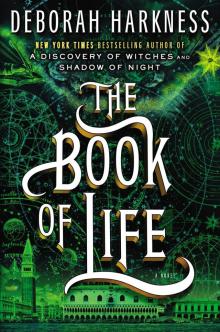 The Book of Life
The Book of Life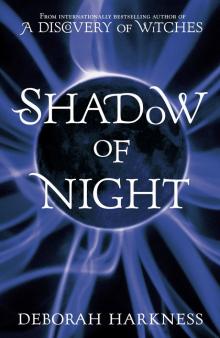 Shadow of Night
Shadow of Night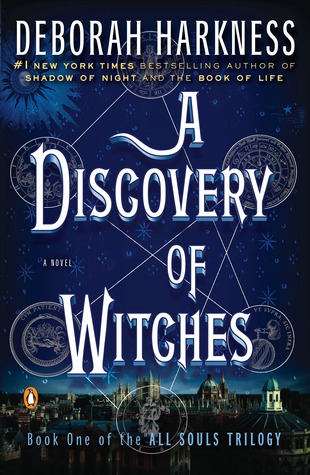 A Discovery of Witches
A Discovery of Witches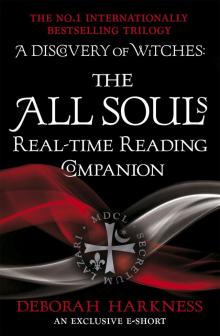 The All Souls Real-Time Reading Companion
The All Souls Real-Time Reading Companion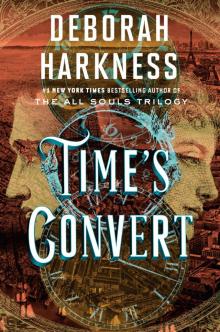 Time's Convert
Time's Convert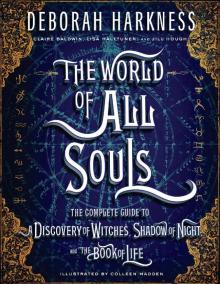 The World of All Souls
The World of All Souls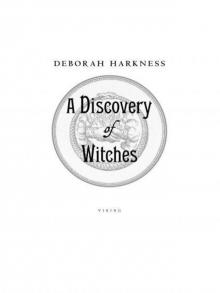 A Discovery of Witches: A Novel (All Souls Trilogy)
A Discovery of Witches: A Novel (All Souls Trilogy) Shadow of Night: A Novel
Shadow of Night: A Novel